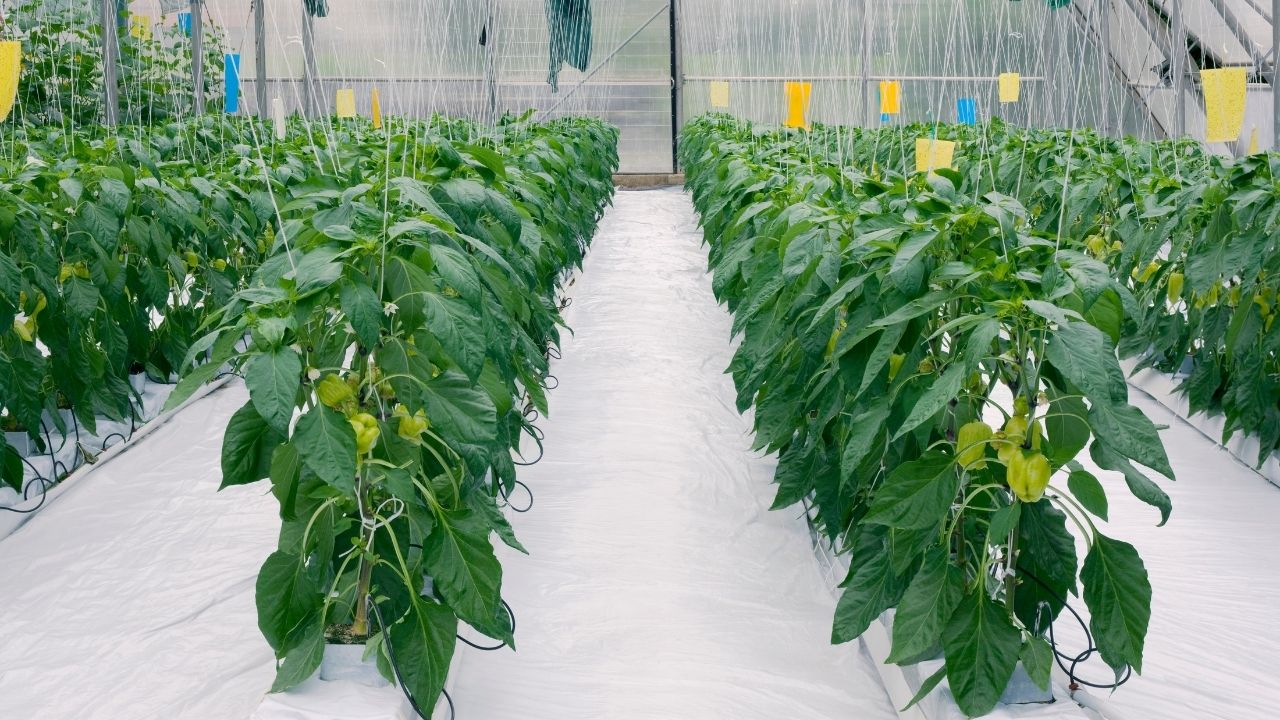
Welcome to the world of chic living! In this article, we will delve into the top 10 trending home decor styles that are capturing the hearts and imaginations of those seeking a stylish and contemporary living space.
From minimalist elegance to coastal charm, from bohemian flair to rustic charm, we will explore a diverse range of design inspirations that will elevate your home to new heights of sophistication.
Get ready to be inspired and transform your living space into a haven of creativity and freedom.
Minimalist
The minimalist style of home decor is characterized by its simplicity and clean lines, making use of only essential elements to create an uncluttered and serene living space.
Minimalist design principles focus on functionality, with an emphasis on open spaces, natural light, and a limited color palette. This style promotes a sense of calm and tranquility, allowing individuals to focus on what truly matters in their living environment.
When it comes to minimalist furniture trends, the emphasis is on clean and sleek designs. Furniture pieces are often streamlined, with straight lines and minimal ornamentation. The use of neutral colors, such as white, black, and shades of gray, is common in minimalist spaces.
Coastal
Continuing the exploration of popular home decor styles, the Coastal theme brings a refreshing and relaxed ambiance to living spaces. Inspired by the ocean and beach, this style incorporates elements that evoke a sense of freedom and tranquility. Here are three key features of Coastal decor:
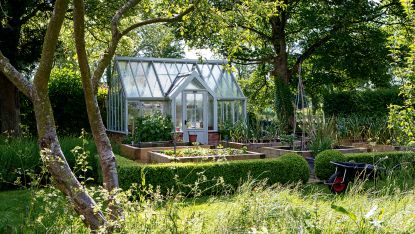
- Coastal inspired color schemes: Soft blues, sandy neutrals, and crisp whites are commonly used in Coastal decor. These colors mimic the hues of the sea, sky, and sand, creating a serene and calming atmosphere.
- Nautical decor ideas: Anchors, ropes, and seashells are often incorporated into Coastal design. These elements add a touch of maritime charm and remind us of the seaside, evoking a sense of adventure and exploration.
- Natural materials: Coastal decor emphasizes natural materials like rattan, wicker, and reclaimed wood. These materials bring the outdoors inside, creating a connection to nature and enhancing the relaxed vibe of the space.
Bohemian
Embracing a bohemian style in home decor means incorporating vibrant color palettes and mixing patterns and textures for a truly eclectic look.
Boho-inspired color palettes often feature rich and earthy tones such as deep greens, warm oranges, and bold blues, creating a sense of warmth and coziness in any space.
Mixing patterns and textures, such as floral prints with geometric designs or velvet with rattan, adds depth and visual interest to the overall aesthetic, allowing for a unique and personalized bohemian vibe.
Boho-Inspired Color Palettes
Boho-inspired color palettes infuse homes with vibrant and eclectic hues, creating a captivating and free-spirited ambiance. Embracing the essence of bohemian style, these color schemes draw inspiration from nature, art, and cultural influences.
Here are three boho-inspired interior design ideas to bring a touch of bohemian magic into your home:
- Earthy Tones: Incorporate warm and earthy colors like terracotta, mustard yellow, and deep greens to create a grounded and cozy atmosphere. These colors evoke a sense of nature and provide a soothing backdrop for bohemian decor elements.
- Bold and Jewel Tones: Add a pop of excitement to your space with bold and jewel-toned accents. Think rich purples, deep blues, and vibrant oranges. These colors create a sense of drama and add a touch of exoticism to your boho-inspired decor.
- Pastel Palette: For a softer and more whimsical bohemian look, opt for a pastel color palette. Soft pinks, light blues, and pale greens create a dreamy and romantic atmosphere. Pair these colors with vintage-inspired furniture and delicate textiles to complete the boho-chic vibe.
With these boho-inspired color palettes, you can infuse your home with a sense of freedom, creativity, and joy. Let your imagination run wild and create a space that truly reflects your unique bohemian spirit.
Mixing Patterns and Textures
One key aspect of bohemian interior design is the skillful mixing of patterns and textures. This style embraces the freedom of self-expression, allowing homeowners to create a space that is uniquely their own.

Mixing patterns and textures in a bohemian-inspired home involves incorporating bold prints and contrasting materials to create a visually stimulating environment. The use of bold prints such as tribal patterns, ikat prints, and paisley designs adds a sense of vibrancy and eclecticism to the space.
Contrasting materials such as rough textures like jute or sisal rugs with soft, plush fabrics like velvet or silk create a tactile experience that is both inviting and interesting.
Rustic
The rustic style's charm lies in its ability to capture the essence of a cozy and inviting countryside retreat. It embraces natural materials, earthy tones, and a sense of simplicity that creates a warm and welcoming atmosphere in any home.
Here are three key elements of the rustic style:
- Natural materials: Rustic decor often features wood, stone, and other natural materials that bring a touch of nature indoors. Exposed beams, reclaimed wood furniture, and stone fireplaces are common in rustic cabins and farmhouse chic homes.
- Earthy tones: The color palette of rustic decor is inspired by nature, with warm earthy tones like browns, greens, and deep reds. These colors create a sense of warmth and tranquility, making your space feel cozy and inviting.
- Cozy textiles: Soft and cozy textiles are essential in rustic decor. Think plush rugs, chunky knit blankets, and cozy throw pillows. These elements add texture and warmth to your space, making it the perfect place to curl up and relax.
Incorporating these elements into your home will help you achieve the rustic style and create a space that feels like a peaceful countryside retreat.
Modern
A popular choice among homeowners, the modern style incorporates sleek lines and minimalist design to create a sophisticated and contemporary living space.
The modern design aesthetic focuses on simplicity, functionality, and clean lines, which creates a sense of openness and spaciousness in any room.
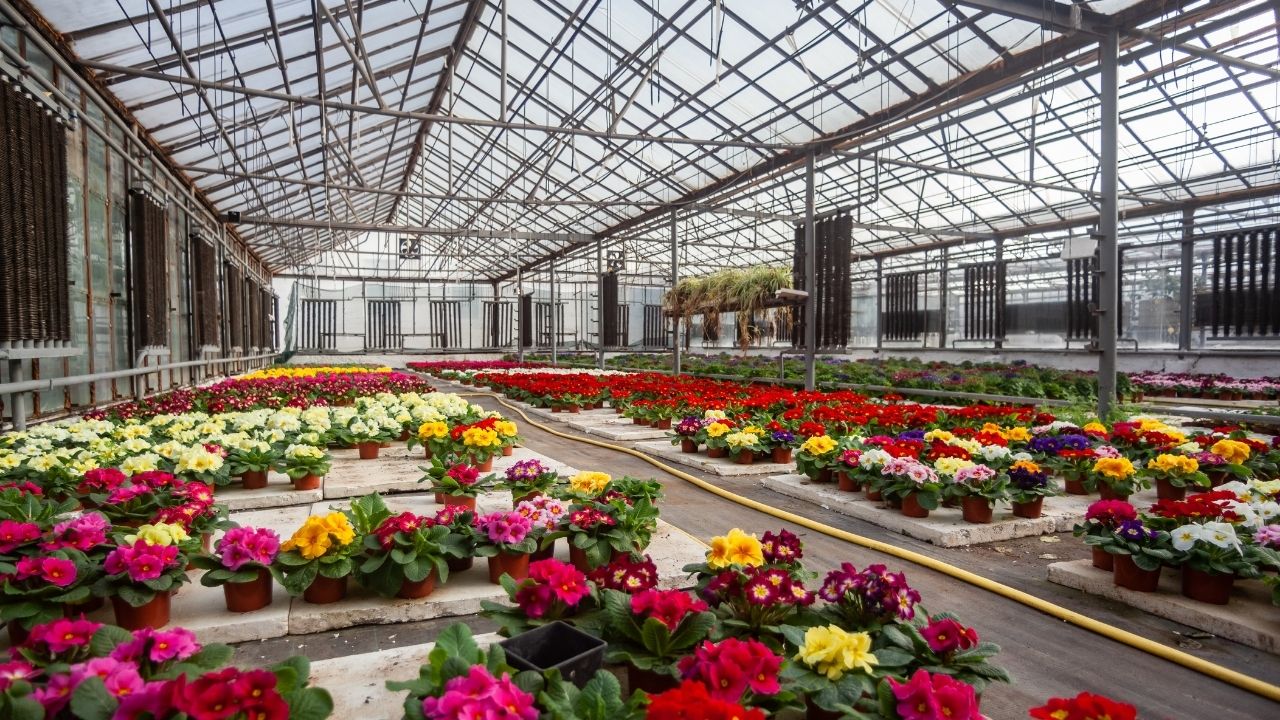
This style is characterized by the use of neutral colors, such as white, black, and gray, with occasional pops of bold colors for contrast.
In modern interiors, furniture and accessories feature smooth surfaces, geometric shapes, and a lack of ornate details.
Key elements of modern design include open floor plans, large windows that flood the space with natural light, and the use of materials like glass, metal, and concrete.
The modern style is perfect for those who desire a clean and uncluttered living environment with a contemporary edge.
Scandinavian
Scandinavian home decor style is characterized by minimalist aesthetics, focusing on clean lines, simplicity, and functionality.
Inspired by the concept of hygge, which promotes coziness and comfort, Scandinavian interiors emphasize creating a warm and inviting atmosphere.
Natural materials like wood, leather, and wool are commonly used, along with a mix of textures to add depth and visual interest to the space.

Minimalist Aesthetics in Scandinavia
One of the most popular home decor styles today is characterized by its minimalist aesthetics, influenced by the clean lines and functional design principles of Scandinavian interiors. Scandinavian simplicity and Nordic design influences have been embraced by individuals who desire a sense of freedom and tranquility in their living spaces. Here are three key elements that define the minimalist aesthetics in Scandinavia:
- Clean lines: Scandinavian interiors are known for their clean and simple lines, which create a sense of order and calmness in the space. Furniture and accessories are often designed with sleek, straight edges, allowing for a minimalist and uncluttered look.
- Neutral color palette: The color palette in Scandinavian minimalist interiors is typically dominated by neutrals like whites, grays, and light woods. These colors create a serene and timeless atmosphere, allowing the focus to be on the form and functionality of the space.
- Functional design: Functionality is at the core of Scandinavian design. Furniture and decor items are carefully chosen for their practicality and usefulness. Every item has a purpose and is thoughtfully integrated into the overall design, resulting in a space that is both aesthetically pleasing and highly functional.
Cozy Hygge-Inspired Interiors
Building on the minimalist aesthetics in Scandinavia, cozy hygge-inspired interiors offer a warm and inviting atmosphere that embraces comfort and relaxation in the home.
Hygge, a Danish concept, focuses on creating a cozy sanctuary where one can find solace and contentment. These interiors are characterized by soft textures, natural materials, and warm color palettes.
Plush blankets, fluffy rugs, and comfortable furniture create a sense of coziness and warmth. Candles and soft lighting add to the ambiance, creating a soothing and relaxing environment.
Knitted throws and cushions provide a tactile element, inviting you to curl up and unwind. The incorporation of natural elements, such as wooden furniture and plants, brings a touch of nature indoors, enhancing the feeling of tranquility.
Cozy hygge-inspired interiors are perfect for those who desire a haven to escape the stresses of everyday life and find comfort in their own space.
Natural Materials and Textures
With an emphasis on natural materials and textures, the Scandinavian home decor style embraces simplicity and the beauty of nature. This design approach is not only aesthetically pleasing but also aligns with the principles of sustainable design and eco-friendly decor. Here are three key elements that define the Scandinavian style:

- Wood: Scandinavian interiors often feature light-colored wood, such as birch or pine, which brings warmth and a sense of connection to nature. Furniture, floors, and accents made from natural wood create a cozy and inviting atmosphere.
- Natural Fabrics: Textiles play a significant role in Scandinavian decor, with a focus on natural fabrics like linen, cotton, and wool. These materials add softness and comfort, while also being environmentally friendly and sustainable.
- Organic Shapes: Scandinavian design embraces organic shapes and minimalist forms. Curved lines and smooth contours can be found in furniture, lighting fixtures, and decorative objects, creating a sense of harmony and tranquility.
Industrial
The Industrial style of home decor showcases the use of raw materials and exposed structural elements. It draws inspiration from old factories and warehouses, creating a rugged and edgy aesthetic. Industrial design elements such as metal pipes, exposed brick walls, and concrete floors are commonly found in this style.
The color schemes often feature neutral tones like grays, blacks, and browns, creating a sense of simplicity and minimalism. Industrial decor embraces the beauty of imperfections, celebrating the rawness and authenticity of materials.
This style is ideal for those who desire a sense of freedom and non-conformity in their living spaces. By incorporating industrial elements and color schemes, one can transform their home into a modern and stylish sanctuary that reflects their unique personality.
Traditional
Traditional home decor style is a timeless choice that combines classic and modern elements to create a warm and inviting atmosphere.
It celebrates the beauty of traditional design with a twist, incorporating unexpected elements and fresh updates.
From elegant furniture pieces to rich color palettes and intricate details, traditional style offers a sense of familiarity and sophistication that never goes out of style.
Classic Vs. Modern
In the realm of home decor styles, the clash between classic and modern aesthetics has become a focal point for discerning homeowners. The choice between classic and contemporary design reflects contrasting visions of the past and future.
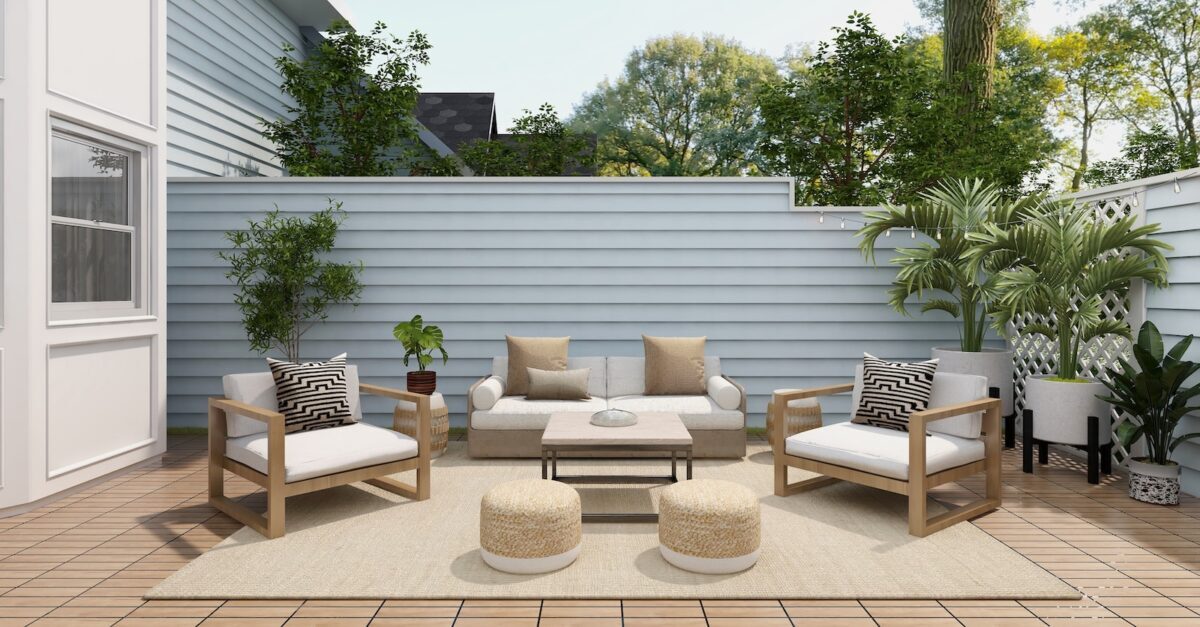
Here are three key differences between these two popular home decor styles:
- Timeless Elegance vs. Sleek Simplicity: Classic decor embraces vintage charm, with ornate furniture, intricate patterns, and rich colors. It evokes a sense of history and tradition. On the other hand, modern design features clean lines, minimalistic furniture, and neutral color palettes. It prioritizes simplicity and functionality.
- Vintage vs. Futuristic: Classic decor draws inspiration from the past, incorporating antique furniture, vintage textiles, and retro accents. It creates a sense of nostalgia and warmth. In contrast, modern design embraces futuristic elements, such as sleek metals, geometric shapes, and innovative materials. It exudes a sense of progress and innovation.
- Formal vs. Casual: Classic decor often leans towards formal aesthetics, with its emphasis on symmetry and grandeur. It creates a sense of elegance and sophistication. In contrast, modern design embraces a more casual and relaxed approach, with an emphasis on open spaces, natural light, and comfort. It fosters a sense of freedom and informality.
Ultimately, the choice between classic and modern home decor styles comes down to personal preference and the desired atmosphere for your living space. Whether you prefer the timeless elegance of classic design or the sleek simplicity of modern aesthetics, both styles offer unique and appealing options for creating a chic and stylish home.
Timeless Design Elements
When considering timeless design elements, one cannot overlook the enduring appeal of traditional home decor styles. Traditional styles exude a sense of timeless elegance and vintage charm that resonates with those who appreciate the beauty of the past.
These design elements are characterized by rich, warm colors, ornate patterns, and intricate details. Furniture pieces are often crafted from solid wood and feature intricate carvings and embellishments. Fabrics used in traditional decor are luxurious, such as velvet, silk, and brocade, adding a touch of opulence to the space.
Traditional decor also embraces classic architectural details, such as crown moldings, wainscoting, and coffered ceilings. By incorporating these timeless design elements, homeowners can create a space that exudes sophistication and everlasting beauty.
Traditional With a Twist
Continuing the exploration of timeless design elements, the subtopic of 'Traditional With a Twist' delves into innovative reinterpretations of classic home decor styles. This contemporary take on traditional design combines the elegance and sophistication of traditional decor with modern elements to create a fresh and unique aesthetic. Here are three key characteristics of the traditional with a twist style:
- Bold color combinations: While traditional decor often favors muted and neutral tones, contemporary traditional embraces bold and unexpected color combinations. Think vibrant jewel tones paired with metallic accents or rich earthy hues juxtaposed with pops of bright colors.
- Mixing old and new: In contemporary traditional design, antique or vintage pieces are seamlessly integrated with modern furniture and accessories. This creates a dynamic and eclectic look that adds depth and character to the space.
- Unique patterns and textures: Traditional with a twist embraces unconventional patterns and textures, combining different materials and finishes to create visual interest. From bold geometric prints to intricate handcrafted details, this style allows for freedom and creativity in incorporating unique elements into the decor.
Incorporating these elements into your home decor will bring a sense of traditional elegance with a modern twist, creating a space that is both timeless and contemporary.
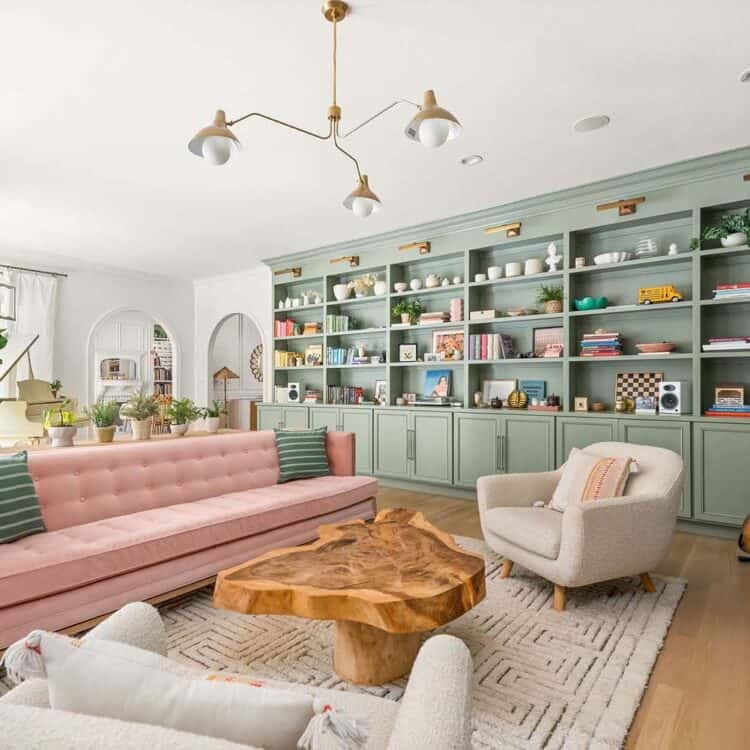
Farmhouse
The Farmhouse style has been gaining popularity in the world of home decor. This rustic farmhouse aesthetic combines elements of simplicity, comfort, and functionality to create a cozy and inviting atmosphere. With its roots in rural farmhouses, this style embraces natural materials, such as wood and distressed finishes, as well as neutral color palettes.
Farmhouse chic incorporates vintage and antique pieces, adding character and charm to the space. The key to achieving this style is to strike a balance between old and new, combining rustic elements with modern touches. Think reclaimed wood furniture, exposed beams, and shiplap walls paired with sleek, contemporary accents.
Whether you live in a rural setting or a bustling city, the farmhouse style offers a warm and welcoming ambiance that is both timeless and on-trend.
French Country
French Country is another popular home decor style that complements the cozy and inviting atmosphere of the farmhouse aesthetic. It exudes an elegant charm while incorporating rustic farmhouse elements. Here are three key aspects of the French Country style:
- Color palette: French Country embraces soft, muted colors inspired by the French countryside. Think pastel blues, creams, and earthy tones that create a serene and timeless ambiance.
- Natural materials: This style celebrates the beauty of natural materials such as wood, stone, and wrought iron. These elements add warmth, texture, and a touch of rustic charm to the space.
- Vintage accents: French Country decor often includes antique or vintage accents like distressed furniture, weathered mirrors, and ornate chandeliers. These pieces bring a sense of history and character to the space.
Frequently Asked Questions
How Can I Incorporate the Minimalist Style Into a Small Living Space?
To incorporate the minimalist style into a small living space, focus on maximizing functionality and organizing small spaces. Utilize storage solutions, declutter, and choose furniture with clean lines and a neutral color palette to create a sense of space and simplicity.
What Are Some Key Elements of Coastal Home Decor?
Key elements of coastal home decor include light and airy color palettes, natural materials like wicker and rattan, nautical-inspired accents, and a focus on bringing the outdoors in. Popular materials used in rustic home decor include reclaimed wood, stone, and metal.
How Can I Add a Bohemian Touch to My Bedroom Without Overwhelming the Space?
To add a bohemian touch to your bedroom without overwhelming the space, incorporate natural materials, such as rattan or macrame, choose a mix of patterns and textures, and opt for warm, earthy tones. Layering textiles and adding plants will also enhance the boho chic vibe.
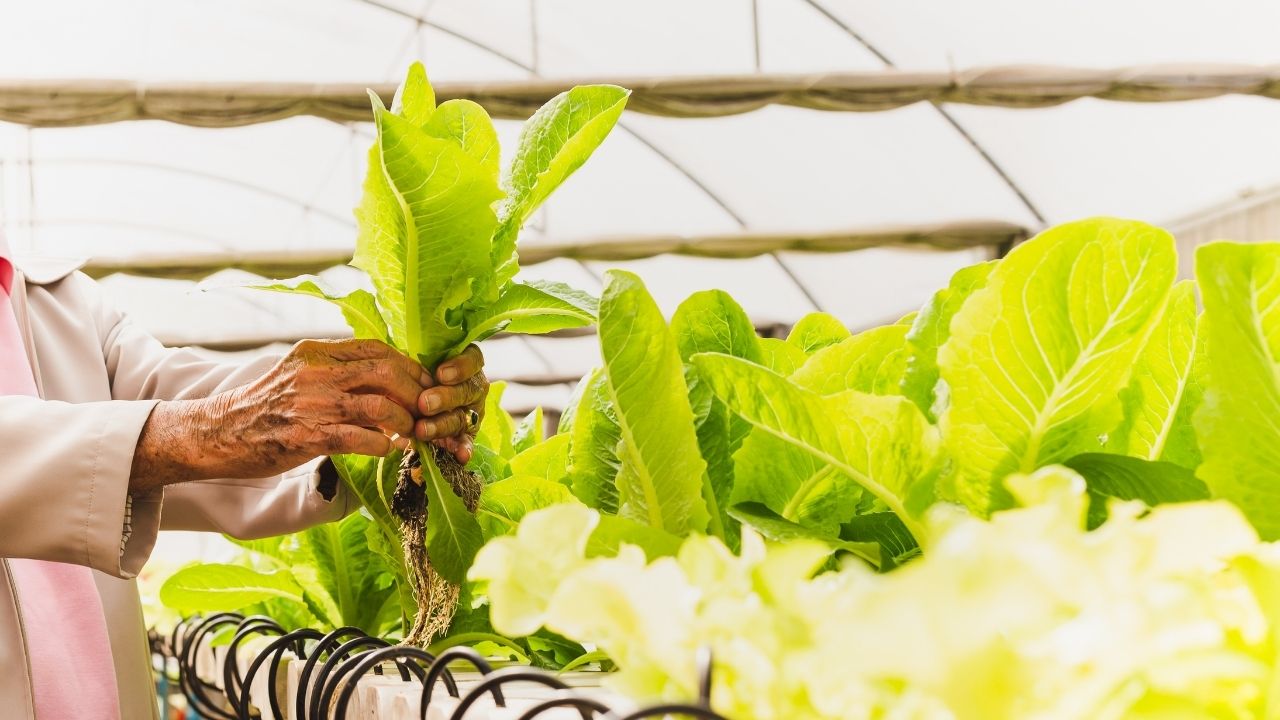
What Are Some Popular Materials Used in Rustic Home Decor?
Popular materials in rustic home decor include wood and metal. These natural elements add warmth and character to a space, creating a cozy and inviting atmosphere. Incorporating rustic accents can be done on a budget and can complement modern home designs.
Are There Any Specific Colors or Patterns Associated With the Modern Home Decor Style?
Specific color palettes for modern home decor often include neutral tones such as whites, blacks, and grays, with pops of bold colors like red or turquoise. Pattern options can range from geometric to abstract, adding visual interest to the space.






